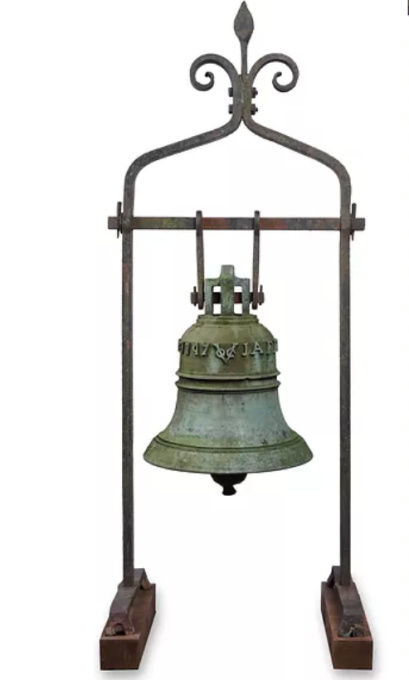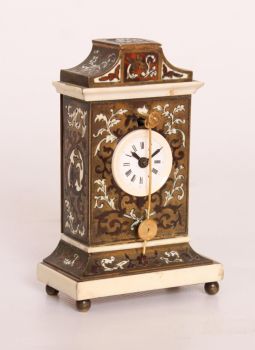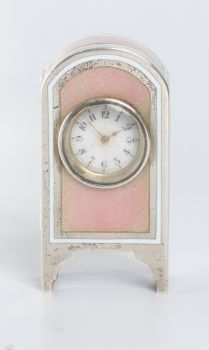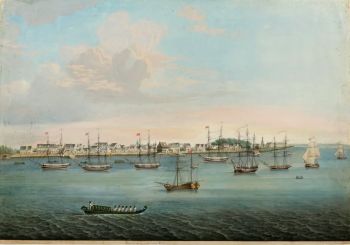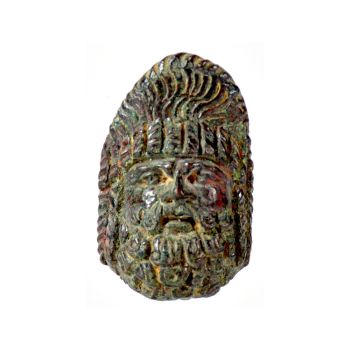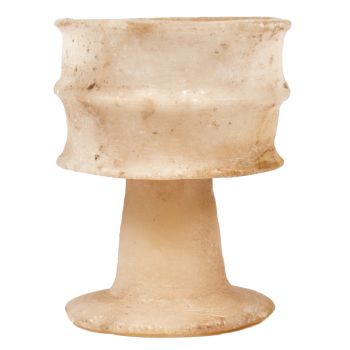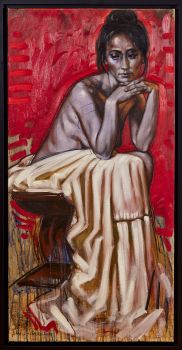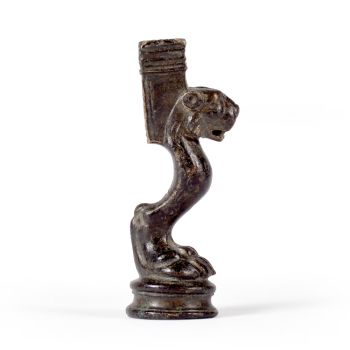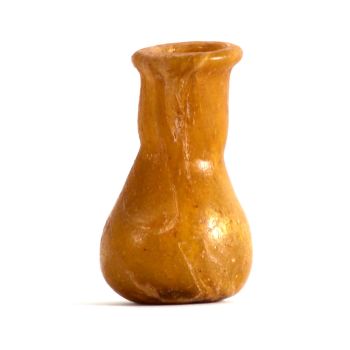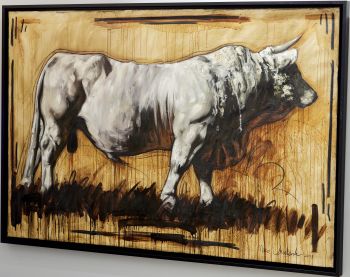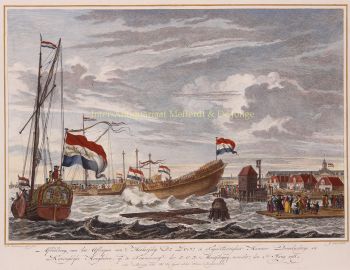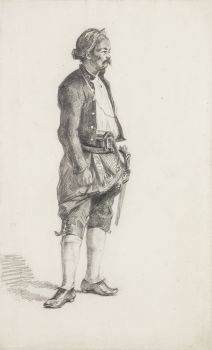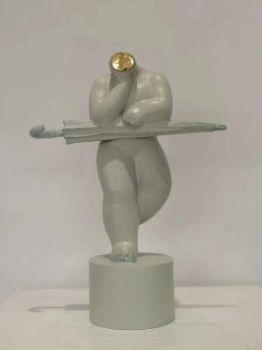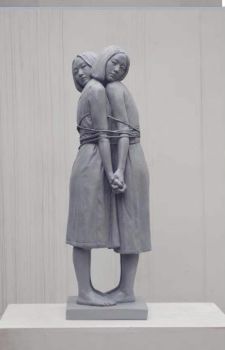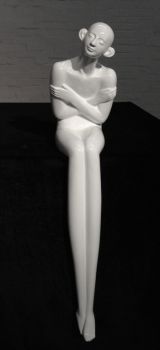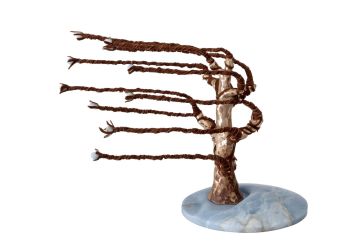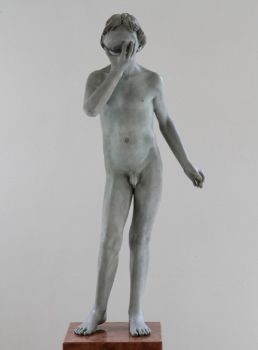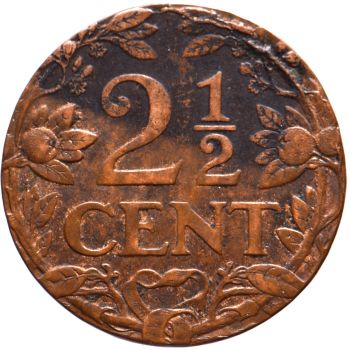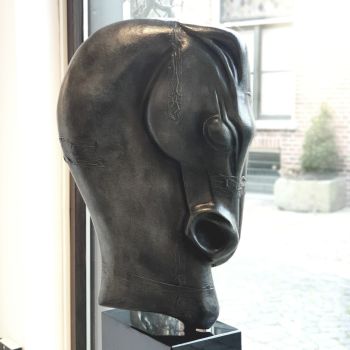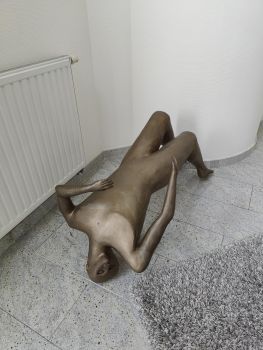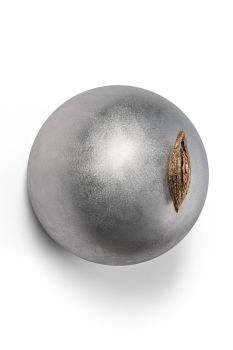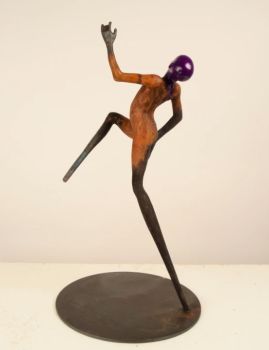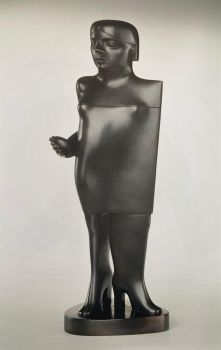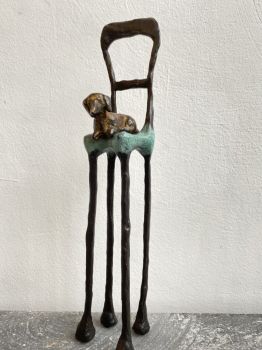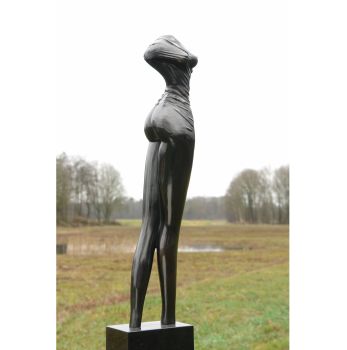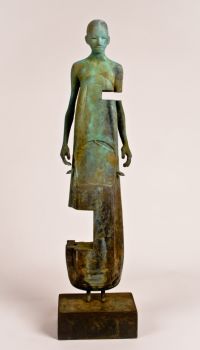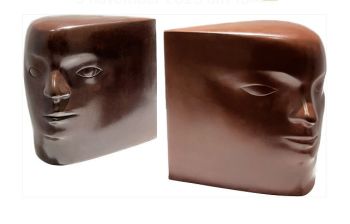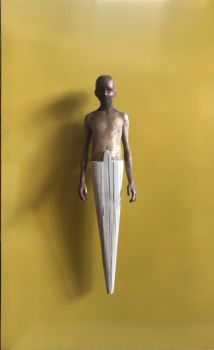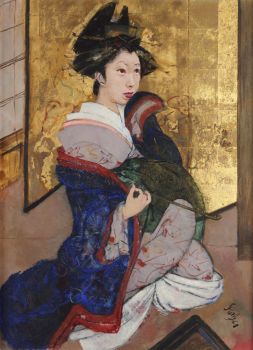The bell of the VOC fortress in Jaffna, Sri Lanka 1747
Onbekende Kunstenaar
BronsMetaal
44 ⨯ 36 cm
Prijs op aanvraag
Zebregs & Röell - Fine Art - Antiques
- Over kunstwerk
The bell of the VOC fortress in Jaffna, Sri Lanka, marked JAFFANAPATNAM Ao 1747 VOC Cast in Jaffna or Colombo, 1747 H. 44 x Diam. 36.5 cm In 1658 Rijcklof van Goens (1619-1682) conquered Jaffnapatnam, a crucial Portuguese town on the North-East coast of Sri Lanka, for the VOC. For an important portrait of him by Jürgen Ovens, see Uit Verre Streken, March 2018, no. 4. Within two decades of conquering, the Dutch built a new fortress at Jaffna overlooking the lagoon, as they considered the old Portuguese structure to be out of date. The new fort, built according to the Dutch notions, was provided with a new church named the Kruys Kerk, which was still in the fort as a museum in the 1990s. The two bells from the old Portuguese Church of the Lady of Miracles, one large and one small with legend ‘Nossa Senhora Dos Milagres de Jafanaptao 1648’ were hung in the new church. The smaller of the two continued to hang in the tower of the Jaffna church, but was eventually removed for safety and lodged in the vestry. The fortress has long been considered by historians and archaeologists to be one of the largest, strongest and best-preserved forts built by a European colonising power in Asia. However, during the severe struggle in the 1990s between the Tamil Tigers and the Sri Lankan army, which had a base in the old Dutch fort, the castle and the Kruys Kerk were largely destroyed. With financial aid from the Netherlands, the castle is being restored, but the church will unfortunately not be rebuilt. The present bell, with the VOC monogram and dated 1747, is likely to have been the bell of the belfry inside the fort or above the gate, used to call people to work, or to call the alarm. A bell with the monogram of a trading company is not very likely to have been a church bell to call people to church. Provenance: Stenton House on the River Tay, near Dunkeld, Perthshire. Stenton Estate belonged to the Scottish Stewart family. The original part of the house dated to the 17th century with extensions in the 18th and 19th centuries. Captain James Stewart (1784-1843), who died in Colombo, possibly took the bell from the fortress and sent it to the family estate in Scotland. The bell remained in Stenton House garden until the house was sold at the end of 2019.
- Over kunstenaar
Het kan voorkomen dat een kunstenaar of maker onbekend is.
Voor sommige werken is het niet te bepalen door wie het gemaakt is of dat het is gemaakt door (een groep) ambachtslieden. Voorbeelden zijn beelden uit de Oudheid, meubels, spiegels of handtekeningen die vaak niet duidelijk of leesbaar zijn. Maar ook sommige werken zijn helemaal niet gesigneerd.
Ook kunt u de volgende beschrijving vinden:
•"Toegeschreven aan …." waarschijnlijk een werk van de kunstenaar maar niet zeker of gedeeltelijk
•“Atelier van ….” of werkplaats van” een werk uitgevoerd in het atelier of atelier van de kunstenaar, eventueel onder zijn toezicht
•“Cirkel van ….” een werk uit de periode van de kunstenaar die zijn invloed laat zien, nauw verbonden met de kunstenaar maar niet noodzakelijkerwijs zijn leerling
•“Stijl van ….” of “Volger van ….” een werk uitgevoerd in de stijl van de kunstenaar, maar niet noodzakelijk door een leerling; kan eigentijds of bijna eigentijds zijn
•“Wijze van ….” een werk in de stijl van de kunstenaar maar van latere datum
•"Na …." een kopie (van welke datum dan ook) van een werk van de kunstenaar
•“Getekend…”, “Gedateerd….” of “Ingeschreven” dan is het werk gesigneerd/ gedateerd/ ingeschreven door de kunstenaar. De toevoeging van een vraagteken duidt op een element van twijfel
•"Met handtekening ...", "Met datum ...", "Met opschrift..." of “Draagt signatuur/datum/opschrift” dan is de handtekening/datum/opschrift toegevoegd door iemand anders dan de kunstenaar
Bent u geïnteresseerd om dit kunstwerk te kopen?
Artwork details
Related artworks
Onbekende Kunstenaar
A white jade ‘Lotus Seedpod and Bug’ carving, Qing dynasty, 18th century18th century
Prijs op aanvraagMenken Works of Art
1 - 4 / 12- 1 - 4 / 12
Onbekende Kunstenaar
Dutchmen in miniature (Netsuke)1700 - 1900
Prijs op aanvraagZebregs & Röell - Fine Art - Antiques
Onbekende Kunstenaar
EEN JAPANS MODEL VAN EEN NORIMONO, EEN DRAAGSTOEL1650 - 1700
Prijs op aanvraagZebregs & Röell - Fine Art - Antiques
Onbekende Kunstenaar
AN IVORY NETSUKE OF A DUTCHMAN FROLICKING WITH A SMALL BOY18th century
Prijs op aanvraagZebregs & Röell - Fine Art - Antiques
Onbekende Kunstenaar
EEN VERGULD-ZILVER SRI LANKAANSE DOCUMENTEN ROLCONTAINER19th century
Prijs op aanvraagZebregs & Röell - Fine Art - Antiques
Onbekende Kunstenaar
A silver spoon commemorating Juff’ Margareta van Hoorn1656 - 1694
Prijs op aanvraagZebregs & Röell - Fine Art - Antiques
Onbekende Kunstenaar
Twee studieportretten van Mas Marco Kartodikromo1900 - 1950
Prijs op aanvraagZebregs & Röell - Fine Art - Antiques
1 - 4 / 24- 1 - 4 / 24
Onbekende Kunstenaar
EEN VERGULD-ZILVER SRI LANKAANSE DOCUMENTEN ROLCONTAINER19th century
Prijs op aanvraagZebregs & Röell - Fine Art - Antiques
Onbekende Kunstenaar
A large Japanese Imari porcelain 'VOC Groningen' dish1800 - 1925
Prijs op aanvraagZebregs & Röell - Fine Art - Antiques
Onbekende Kunstenaar
An Indian part-gilt silver-clad ceremonial sceptre or mace with a tiger’s head1850 - 1900
Prijs op aanvraagZebregs & Röell - Fine Art - Antiques
 Gecureerd door
Gecureerd doorDanny Bree
1 - 4 / 12




